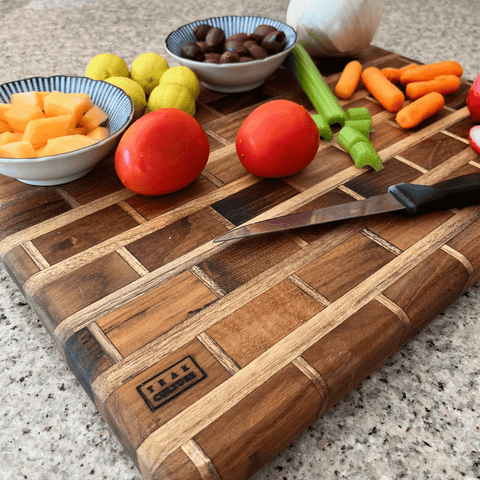Are You Sprinkling Plastic Slices on Your Dinner Salad Tonight? Yum
No, this is not a new Gen Z viral craze streaming on TikTok.
Everyone—including you—is eating plastic bits with their veggies.
And you’ve been doing it for years, albeit, unwittingly.
Plastics, as I’m sure you know, are everywhere, and everywhere they shouldn’t be.
Do you remember the scene in the movie The Graduate with Dustin Hoffman?
Hoffman had just graduated from college and his neighbor (Ann Bancroft’s husband in the movie) told him to consider a career in plastics.

“There’s a great future in plastics. Think about it,” he told young Hoffman.
Boy, was he ever right, and in the worst possible way!
Plastic particles [microplastics] are in the air we breathe, the water we drink, the water we swim in, and the food we eat.
You don’t taste it, you can’t smell it—but it’s there. Everywhere. All the time.
You’ve seen the pictures. Plastic containers, bottles and such, that are polluting—choking—the oceans. So, that’s nothing new.
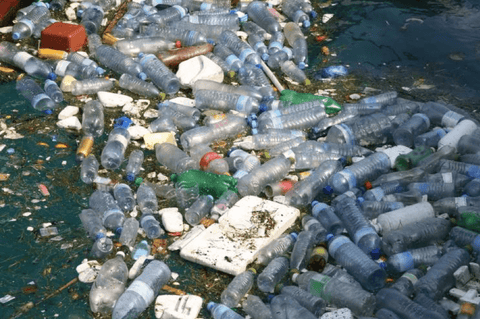
But, today, I want to talk about the plastics you’re eating—chowing down on with almost every meal.
Not big chunks of it by the mouthful.
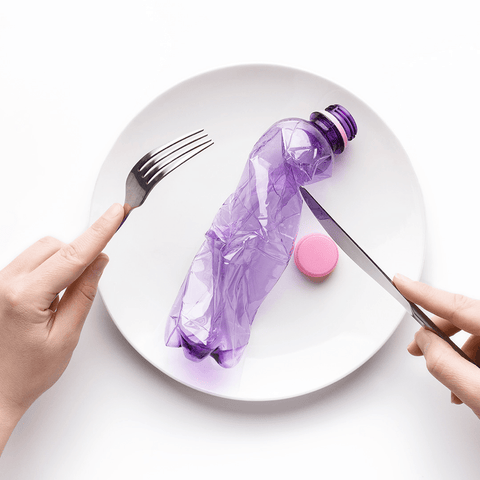
But you do eat it—and far too much of it.
Now I’m going to show you how much you’re eating and how to stop doing it.
Because…
When you eat microplastics as an unintentional garnish they enter your blood stream—that's not good!
They can also interfere with your digestive and respiratory system—that's not good!
And the chemical additives microplastics release can also disrupt your endocrine and reproductive system (if you’re of child-bearing age), according to a 2022 study conducted in South Korea.
Similarly, a 2022 report by the U.S. Census Bureau and the National Center for Health Statistics found that fertility rates in the U.S. have declined for 30 years, between 1990 to 2019.
One of the suspect reasons, ingesting plastics.
More studies are also showing that animals exposed to microplastics may experience developmental delays, behavior changes, infertility and weakened immune systems.
Maria Casamatta, health-crusading founder of Oliver Care Company, selling “hormone-friendly” personal care products, has been working tirelessly to "increase awareness about the presence of endocrine-disrupting chemicals (EDCs) in common consumer products."
Endocrine-disrupting chemicals are chemicals that mimic, block or interfere with hormones in the body's endocrine system.
"There is a concerning global decline in fertility and overall hormonal health, with EDCs playing a significant role in this issue," says Casamatta.
EDC’s can be either natural or human-made and are found in everyday products including cosmetics, food packaging, toys, and pesticides.
"A major source of EDC exposure is from BPA and Phthalates, which are key components found in plastics—and specifically plastic cutting boards," said Casamatta.
No exaggeration to say plastic cutting boards could be ruining your life
If you own a cutting board (and many people have more than one), no doubt, it's plastic.
And for good reason. They’re easy to use. And they’re cheap.
When you’re done with chopping, cutting or dicing your food, you don’t have to hand-wash it.
You just drop it in the dishwasher. And you’re done. No scrubbing, no rinsing, no hand-drying.
Except…
Casamatta made a TikTok video.
Here’s a screenshot:
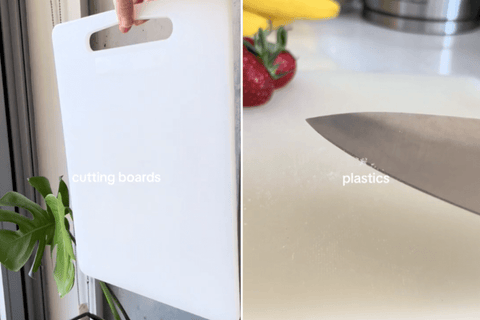
See that white fuzz on the knife on the right—that’s from the cutting board. They’re microplastics.
FYI, that video has been watched over 12,000,000 times! Obviously, people are concerned.
For good reason…
A recent study, published by the journal Ecotoxicology and Public Health, evaluated the amount of microplastics found in carrots when chopped on plastic cutting boards.
At the study’s end, they found 1,114 microplastic particles (plastics less than 5 millimeters long) on the carrots each time they were cut on the plastic cutting boards.
Put another way…
Your plastic cutting board could generate 15 milligrams of microplastics per cut, or around 50 grams a year.
That’s the equivalent of eating 10 plastic credit cards every year!
Almost one credit card a month—just by using a plastic cutting board.
So stop doing it!
How? Use the same type of cutting board your mother, your grandmother and her grandmother’s grandmother used.
A hardwood cutting board
Not too hard of a wood mind you (bamboo immediately comes to mind—even though bamboo is not really wood, it’s a type of grass), otherwise, you’ll quickly dull your knives.
Worse still, you might end up replacing microplastics with micro-shards of steel from your knives.
Nor do you want a cutting board made of a soft wood, like cypress, otherwise you’ll be dining on wood splinters.
One the biggest benefits of a good quality wood cutting board—aside from not eating plastic bits—is that almost all woods have anti-microbial properties.
In other words, wood cutting boards may be protecting your health
Granted, some woods have stronger anti-microbial properties than others. Teak, of course, being one of them.
For example, this Teak Culture cutting board.
As Ben Chapman, a food safety researcher at North Carolina State, explains:
Hardwoods are fine-grained, and the capillary action of those grains pulls down fluid, trapping the bacteria—which are killed off as the board dries after cleaning.
And with teak having the added benefits of resins and natural oils that suck the life out of bacteria...a teak cutting board should have a prominent place on your kitchen counter.
Also, as you can tell from the photo above…
Wood cutting boards are prettier than plastic cutting boards
That’s why people collect them and display them on their kitchen counters.

They don’t do that with their plastic cutting boards. They hide them.
Some proud wood cutting board owners will even turn them into wall art in their dining room [makes the room very homey, don't you think?]. Go figure.
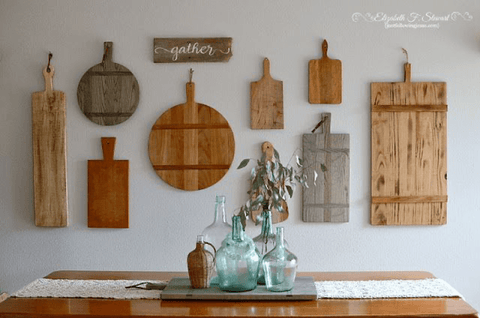
And for goodness sake, please stop eating your plastic cutting board!
Read more of our articles on cutting boards and charcuterie boards:
6 dangerously dumb mistakes people make with their cutting boards
How to decorate a charcuterie board with meats, cheeses and more

